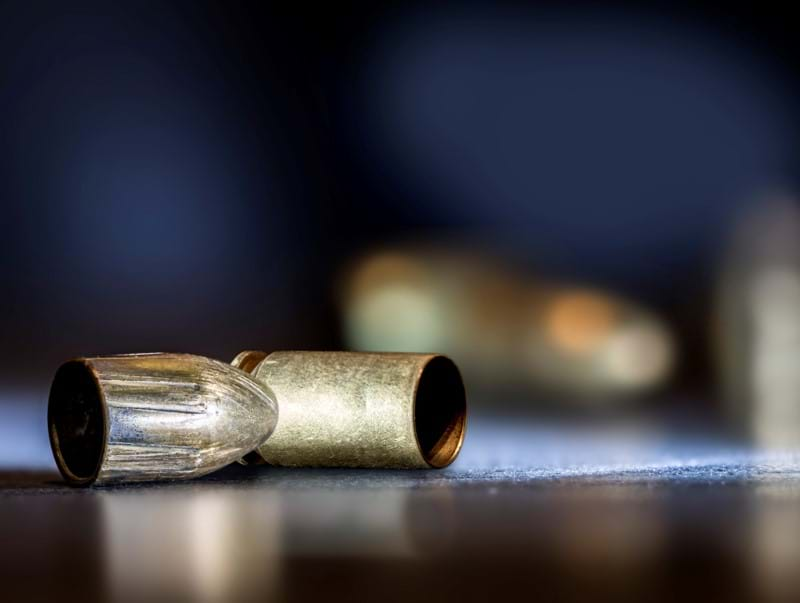There are many things that can be done to increase your effectiveness with IBIS. One of the services we offer is to have an IBIS trainer visit your site and perform an evaluation of your IBIS work and your workflow. The IBIS work evaluation would involve spot-checking a random sample set of your acquisitions to cover things such as exhibit orientation and delimiter placement to ensure that the users at your site are working according to protocol. The workflow evaluation would involve examining the manner in which the casework gets to your IBIS machine along with what happens afterwards.
The workflow evaluation can often be an eye-opener for users, especially at sites where IBIS has been around for quite some time. Some of our oldest customers have been working with IBIS for more than two decades, which could predate some of the current staff. In these scenarios you may have some legacy workflow protocols that fall under the banner of “That’s just how we’ve always done it.” That may well be fine, but it’s not a bad idea to challenge the processes once in a while to see if you can do better. Our trainers have seen many different procedures from many different labs around the world, so at the very least they could offer some food for thought on optimizing how you work.
On a recent trip one of our trainers noticed a habit that concerned him, where multiple acquisitions were made of matching evidence exhibits within a case. That is to say, Exhibit 1 and Exhibit 2 were known to be from the same gun and both were entered into IBIS. This practice had become their standard protocol and reviewing several sets of these images showed that there were no significant differences between the two exhibits entered. This means that they’ve fallen into a habit that has doubled their workload but for no particular gain.
There is a time and a place for multiple entries but there are pros and cons that come with this practice so you don’t want it to fall under the “That’s just how we’ve always done it” umbrella. The simplified reason users tend to give is that “it doubles our chances of finding a match” but in reality it’s far from that simple.
Things to consider before doing multiple entries
Every acquisition takes time to enter.
Time spent needlessly “working deeper” within a case could be better spent “working further” across your caseload.
Every acquisition takes space in your database.
While your database size is scalable and more disk space can be added, doing multiple entries without reason pushes you to that threshold (at least) twice as fast as is necessary.
Exhibits will impact databases differently based on their Exhibit Categories.
Since Version 3.0 (HD3D) IBIS exhibits are classified by three Exhibit Categories that interact within a crime database in two distinct ways.
Crime Test Fire: Terminated (TFT): This category should be used when the firearm that produced the exhibit is considered “out of circulation” by IBIS. This means that when the acquisition is completed, the exhibit will initiate an Automatic Correlation against exhibits from crime-type categories that occurred before the firearm was seized. Also, TFTs do not correlate against other TFTs because each acquisition represents a known firearm in police custody.
Crime Test Fire: Returned (TFR) and Crime Evidence (CE): In both these categories, exhibits are considered to be “at large” by IBIS, meaning that they represent a firearm out in public that could be used again and again in active shootings. When a TFR or CE exhibit from a crime event is acquired, it launches a correlation that is not restricted by its Date of Occurrence. The gun is still in circulation so not only will it initiate a search correlating as the Reference but it will also show up within the database in future searches that fit its criteria. If you always enter two TFR or CE exhibits and you have a particularly active firearm being used in your area, you create a scenario where you’re needlessly pushing new potential matches further down your Correlation Results List and all those you’re networked to as well. When Top 20 results become crowded with duplicated known pairs, you’ll need to search beyond the Top 20 to find new connections.
Triage is a must – Screen all/Enter Few.
A case containing 15 cartridge cases could have been one gun firing 15 times, 15 guns firing once, or any combination in between. Therefore a triage should always be performed as it lets you determine how many firearms were involved in the shooting, group the exhibits accordingly, and select the most representative sample per group for IBIS. When breech face and firing pin impression quality seems the same within a group, it’s best to base your IBIS selection on the exhibit that has the least amount of headstamp interference in the ejector mark.
A workflow best practice is to have IBIS technicians trained to triage autonomously as this allows firearm examiners to remain focused on their work while the IBIS data entry progresses independently.
When multiple entries are a good idea
Triage shows variances between matching exhibits.
If you work in this field long enough, it’s inevitable that you’ll encounter a “How did that happen?” scenario. Within a group of exhibits, you’ll see plenty of common traits but one exhibit either has something extra or something missing that catches your attention. Depending on what that feature is, it could be worth making an extra acquisition to ensure that the most representative sample of that firearm is captured. Flowback or a shear mark suddenly appearing (or disappearing) within a set are examples of information that would be worth a second acquisition. A drag mark appearing (or not) within a set doesn’t really merit the extra effort.
Different brands of ammunition used in a single firearm.
An extension of the above point often comes into play when different brands of ammunition are shot from a single firearm. This will often introduce variances that include cartridge and/or primer material, primer hardness, primer shape and even size. Some or all of these factors will likely lead to differences in how markings are transferred from the firearm to the exhibits. Triage should still occur to determine which exhibits should be captured into IBIS.
Lead and jacketed test fires in revolvers.
A common practice when entering revolver calibers into BULLETTRAX® is to test fire two types of ammunition; one with a lead bullet and another that is jacketed. This is done because both materials are commonly encountered with revolvers. So, entering one of each gives you a better chance of finding a matching exhibit within the database. If you follow this practice, always make sure that the lead bullets are test fired before the jacketed bullets. This is critically important because jacketed bullets will alter whatever buildup of lead fouling may be in the barrel. Firing your lead bullets with this fouling present will give samples that are more in line with the last bullets fired from the gun, i.e. the last time the gun was fired at the crime scene. If you fire your jacketed bullets first, you’re creating a scenario that is going to make finding matches between lead bullets more difficult.
That’s all for now!






